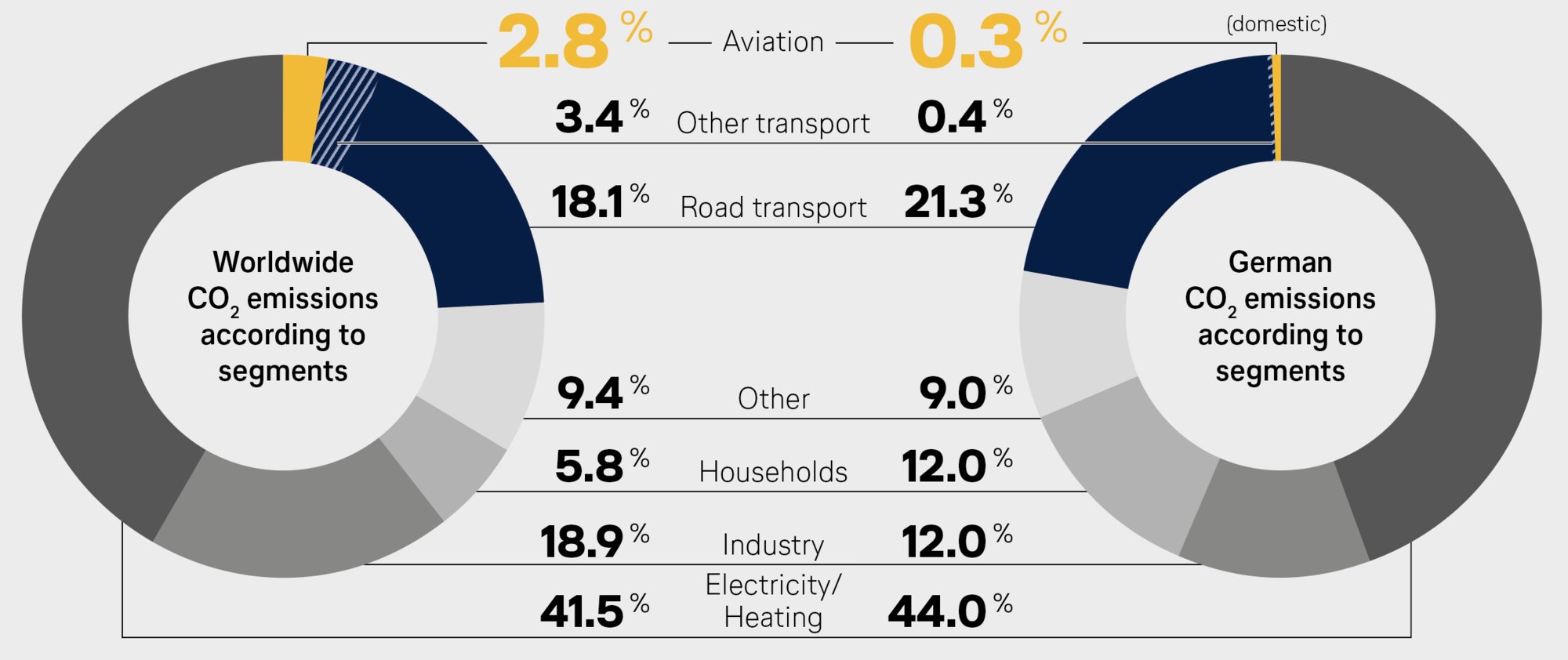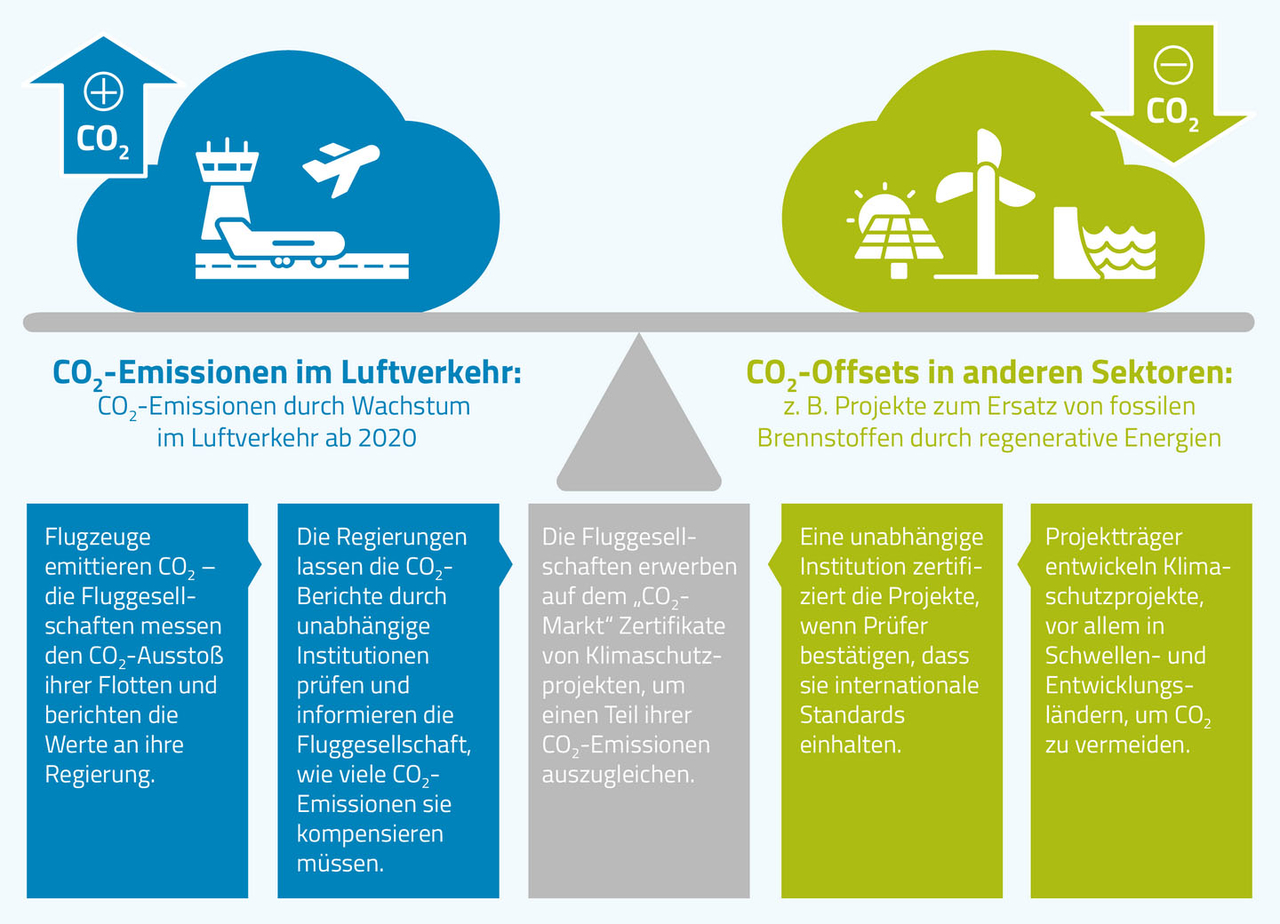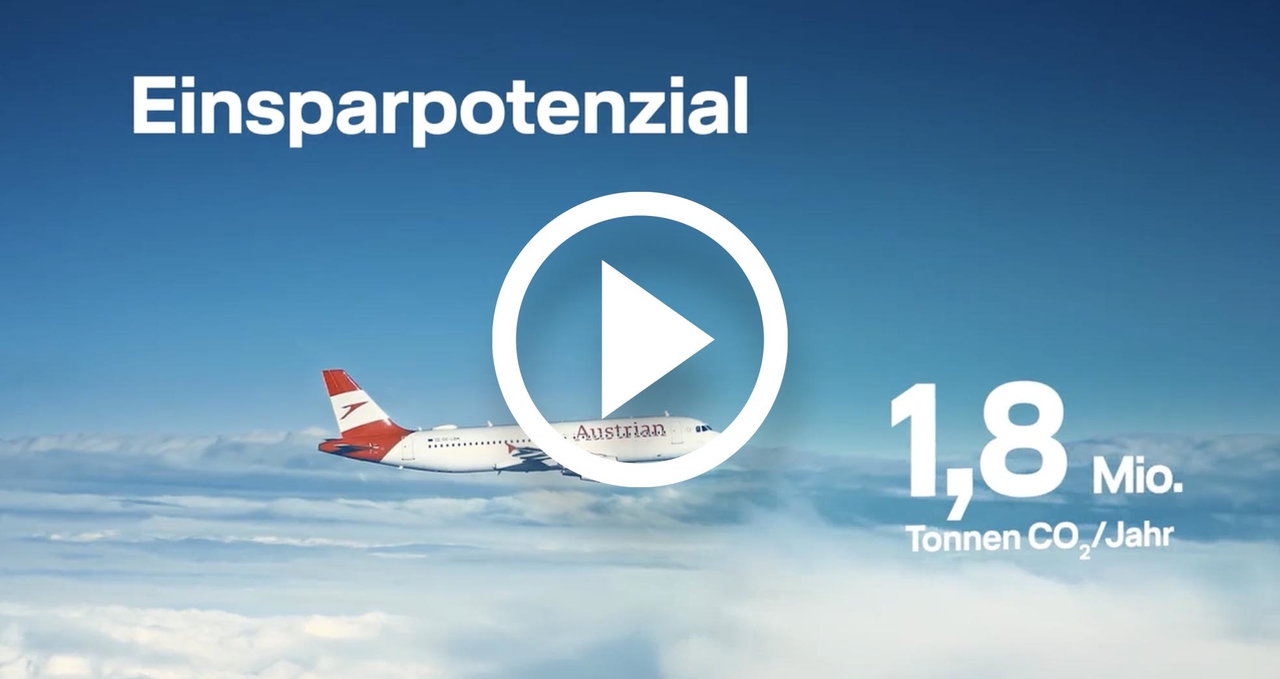Flying sustainably
Lufthansa assumes Responsibility
Nowadays it is no longer possible to imagine a world without flying – we bring together people, cultures, continents and economic regions. Air travel is a symbol of intercultural understanding and of prosperity. To this extent, aviation – without exaggeration – is of great significance for a peaceful world.
Percentage of CO₂ emissions created by aviation

Aviation is responsible for 2.8 percent of CO₂ emissions worldwide. Aviation within Germany is responsible for 0.3 percent of the total of Germany’s CO₂ emissions. In contrast to the situation
with international aviation, the number of flights taken within Germany is falling – by 22 percent in the past 15 years.
Percentage of CO₂ emissions created by aviation

Aviation is responsible for 2.8 percent of CO₂ emissions worldwide. Aviation within Germany is responsible for 0.3 percent of the total of Germany’s CO₂ emissions. In contrast to the situation
with international aviation, the number of flights taken within Germany is falling – by 22 percent in the past 15 years.
Source: International Energy Agency 2019 (figures for 2016)
Providing development aid or the provision of medicines around the globe would hardly be possible without air transport; neither would it be possible to study abroad for a semester. Tourism – which ensures economic stability in many poorer regions – also depends on air travel.
Do we really want to turn back the clock, as is currently being called for by some people? Hardly. Here at Lufthansa, we are leading the way with resolve. Our actions are determined by the interests of customers, employees and shareholders, as well as by society and the environment. Responsibility has always been one of the guiding principles of our company. Lufthansa invests billions of euros each year into new aircraft. Over the coming ten-year period, Lufthansa will on average be receiving a new aircraft every two weeks. We are giving our support to the development of alternative types of fuel so that, in the long-term, CO2-neutral flights will become a possibility. We are offering our customers a new form of offsetting, which allows them to choose between the use of alternative fuels and the more well-known offsetting options. We offset the CO2 emissions of all work-related air travel by Lufthansa Group employees worldwide. We are aiming at becoming CO2-neutral in our ground operations by the middle of the next decade. This all demonstrates that we are doing a great deal to make aviation as sustainable as possible.
Almost three percent of global CO2 emissions come from aviation. And even though this may be less than some people had thought, the sector is very aware of its responsibility in this regard. In the EU, the aviation sector has been growing in a CO2-neutral way since 2012, and worldwide this will be the case as of 2021. For an offensive in favor of climate protection to be effective, teamwork is required. We need manufacturers to deliver innovative engines and aircraft. Customers can balance out the CO2 emissions from their flights through voluntary offsetting in another area.
But, more than anything, we need a fair and appropriate set of rules. As aviation operates internationally, isolated national initiatives cannot achieve much. Quite the opposite – they place an added burden on our domestic industry and give a competitive advantage to our competitors in Turkey, the Gulf States and Asia. These airlines operate via hubs outside of Europe and are already today operating under completely different competitive conditions. The result: isolated national initiatives fail to lead to any savings in CO2 emissions but instead simply shift them to other regions. This does not help the climate at all.
Government policy can also have a big impact beyond the clouds. We need a Schengen for the skies. Passenger aircraft in Europe currently have to take detours which mean that they use up to 10 percent more kerosene. The implementation of a Single European Sky would be a real climate protection measure.
This is a good example of the way in which a transformation into more ecologically-based aviation could succeed – through increased international cooperation. Because only climate protection policies that extend across national borders can be effective whilst having a neutral effect on competition.
Percentage of CO₂ emissions created by aviation

Aviation is responsible for 2.8 percent of CO₂ emissions worldwide. Aviation within Germany is responsible for 0.3 percent of the total of Germany’s CO₂ emissions. In contrast to the situation
with international aviation, the number of flights taken within Germany is falling – by 22 percent in the past 15 years.
Percentage of CO₂ emissions created by aviation

Aviation is responsible for 2.8 percent of CO₂ emissions worldwide. Aviation within Germany is responsible for 0.3 percent of the total of Germany’s CO₂ emissions. In contrast to the situation
with international aviation, the number of flights taken within Germany is falling – by 22 percent in the past 15 years.
Source: International Energy Agency 2019 (figures for 2016)
Further content on the topic
Video
Aviation and CO2
What is the share of aviation in global man-made CO2 emissions? What are the options for reducing CO2 emissions? And what concrete measures is the Lufthansa Group taking to make flight operations as environmentally friendly as possible?
Website
Climate protection portal
The German Aviation Association (BDL) has published comprehensive figures and background information in the climate protection portal on the topic of climate protection in aviation. CORSIA is one of the main topics.

Sustainability Report
Lufthansa Group sets new efficiency record
In 2018, the aircraft of the passenger fleets needed only 3.65 litres of kerosene on average to transport one passenger over a distance of 100 kilometres – a new efficiency record. All facts and figures can be found in our current Sustainability Report.

